On March 18, 1818, the U.S. Congress enacted a law that established a lifetime pension for American veterans of the Continental army who were “in reduced circumstances.”[1] As part of the filing process for these benefits, veterans were required to submit affidavits to local courts with supporting testimonials attesting to their service record during the war. Many, if not most, of the pension claims presented were largely pro forma documents that were sometimes sketchy at best and adhered to a fairly consistent format. In some cases, however, the deponents were unusually detailed and expansive in their statements. Such was the case with the claim of Pvt. Adam Rider of the Maryland and Virginia Rifle Regiment commanded by Lt. Col. Moses Rawlings.
Four months after the passage of the congressional decree, Adam Rider of Ross County, Ohio, stood before Judge John Thompson, president of the county’s court of common pleas, and relayed an account of his time as a Continental Army rifleman during the American Revolutionary War.[2] The seventy-year-old Rider presented his transcribed testimony to Judge Thompson on July 20 in an effort to obtain federal financial assistance.
In his pension statement, Rider related that:
He inlisted in may seventeen hundred seventy five in Hugh Stevenson’s company of Riflemen for one year, in Virginia line and served out said time, and immediately on the expiration of that time he again inlisted in Capt. A. Sheppard’s company Colonel Rawling’s regiment in same line & Corps for three years—during the first inlistment he was marched to Boston, and was in several small skirmishes, in that quarter, and thence to Long island New York where we had a small engagement.[3]
Rider’s pension claim was certified to be accurate by a fellow Ross County resident and distinguished Revolutionary War veteran, Maj. Samuel Finley, who served as Private Rider’s first lieutenant in Capt. Abraham Shepherd’s Company of Rawlings’ rifle regiment starting in July 1776.[4] Both men had enlisted in the Continental Army in Virginia in Capt. Hugh Stephenson’s Independent Rifle Company of Berkeley County (now part of West Virginia) in June 1775.[5] Finley joined up as the senior sergeant, subsequently advancing to first lieutenant with the unit’s reorganization to form Shepherd’s company of Rawlings’ regiment a year later.[6]
The “small engagement” on Long Island to which Rider referred actually occurred on Staten Island soon after he and Stephenson’s company left the Siege of Boston in mid-March 1776.[7] Before the British army landed on Staten Island in June, the riflemen were primarily involved in outpost duty there. On April 7, the company engaged twenty-five men from the British ships Savage and James (“a Pilate Boat to the Phoenix”). The seamen had been sent ashore to procure water; the riflemen captured ten of them with various matériel before the sailors retreated.[8]
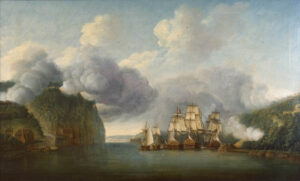
Rider’s deposition continued, explaining that:
his first inlistment expired and during his second inlistment, he with many others were captured at Fort Washington on York island in 76, and confined in an old Sugar house (without sugar), about the eleventh day after said confinement, he, this deponent, climbed out of a back window on the tops of others and escaped the sentry, and went thru new york and got a canoe and landed near Fort Lee.[9]
In July 1776, Rider’s company was reorganized as part of Rawlings’ regiment (his second enlistment), which is probably best known for the role it played in the Battle of Fort Washington on northern Manhattan Island.[10] On November 16 most of the regiment was captured or killed during the battle. Approximately 250 riflemen, including Rider, were defending the northern flank of the American position from a much larger force of several thousand Hessian troops. The unit saw heavy fighting over rough terrain that lasted most of the day during which the Hessians suffered many casualties. The riflemen were eventually driven from their positions back to the fort where they and the rest of the outnumbered American garrison surrendered to the combined British and German force.[11] Private Rider was among those taken prisoner.
Rider detailed in his pension testimony that about eleven days after his capture (on or about November 27), he escaped confinement “in an old Sugar house” and slipped through New York City. Because of the influx of about 3,700 American prisoners taken at the battles of Long Island and Fort Washington, three sugar houses (vacant warehouses), four churches, the “old City Hall,” the “New Gaol” and the city’s Bridewell prison were appropriated as prisons.[12] Although Royal Navy warships were patrolling the lower Hudson River, Rider managed to cross it by canoe and make his way into northern New Jersey near Fort Lee on the west side of the river.

went to join the army but part way this applicant saw in his rout[e] were the British pursuing Genl. Washington & by pretending to be of new York and a labourer out of industry [that is, unemployed] & so forth he got clear by turning out of the way and getting to Tappaune New Jersey commanded by Major Clark, who gave him a letter to Genl. Washington then about Trenton, as supposed, and commanded him to sew it up in lining of jacket and told him how to act.[13]
Circumventing the British troops pursuing Washington’s retreating army, Rider made his way to Tappan in northeastern New Jersey, where Maj. John Clark, Jr., and his Pennsylvania regiment of the Flying Camp were stationed.[14] Rider diligently reported to Clark every bit of information he had collected regarding enemy troop strengths, positions and movements. Clark, a key figure in George Washington’s intelligence network during the American Revolution, particularly in the Philadelphia area, transcribed Rider’s intelligence in a letter to Washington dated November 29, 1776.[15] Rider then set out with Clark’s letter and:
arrived at the Camp of General Washington at Princeton, and after giving the letter to the General this applicant was ordered to join the army which he did at Trenton, and was in battles at Trenton.[16]
Rider delivered Clark’s letter to Washington on December 2 at Princeton where he and the main elements of the American army were then encamped.[17] The letter in part reads:
The Bearer of this a Private in Colo. Rawlins’s Regiment made his escape from the Enemy in New York yesterday, he is an intelligent Fellow, and brings information that upwards of ten thousand of the Enemy embarked on Sunday last, under the Command of General Clinton, the place of their destination uncertain; some of them informed him they were gone to Carolina, others say to the Eastward. (quere if not to the Capes of Delaware)—The number of the Enemy at Fort Lee three thousand, at Hackensack about seven thousand under the Command of Lord Cornwallis. Doctr Pell has just made his escape from them, he also confirms the above accounts, but says it was believed by many the Troops under Clinton were gone to Rhode Island.[18]
George Washington notified John Hancock and Congress from Trenton on December 4 of Clark’s letter and its new intelligence:
The inclosed, is a copy of a Letter which came to hand last night from Major Clark, to which I beg leave to refer you for the intelligence it contains. The Number of the Enemy said to be embarked is supposed to be rather exaggerated. That there has been an embarkation is not to be doubted, it being confirmed through various Channels.[19]
Even though Washington’s assessment of Private Rider’s British troop tally was that it was “rather exaggerated,” Rider’s observations did serve as much-needed confirmation of the date of embarkation on November 24 and the large number of British soldiers in Lt. Gen. Henry Clinton’s expedition that eventually set sail for Rhode Island on December 1 from New York’s East River via Long Island Sound.[20] Rider’s surveillance came at a critical time of the war when Washington and Congress most needed information on enemy troop numbers, positions and movements.
After delivering Clark’s letter to Washington, Rider rejoined the main army, as ordered.[21] He linked back up with “a small part of Rawlins’s” regiment at the army’s “camp above Trenton falls” and fought with them in Brig. Gen. Hugh Mercer’s brigade during the Trenton–Princeton campaign in late 1776 and early 1777.[22] Rider was one of several men from Rawlings’ regiment who had escaped from British captivity after the Battle of Fort Washington in time to participate in the battles of Trenton and Princeton.[23] He went on to serve as an attached member of Col. Daniel Morgan’s Provisional Rifle Corps at the battles of Saratoga, White Marsh and Monmouth in 1777 and 1778 and then in the war’s southern theater until the British surrender at Yorktown in late 1781.[24] Pvt. Adam Rider did not engage in any more intelligence gathering, intentional or otherwise, after he reunited with the American army at Trenton.
[1] U.S. Congress, Acts of the Fifteenth Congress of the United States, 1817 to 1819 (U.S. Government Publishing Office, n.d.), 19: 410–411.
[2] Pension application of Adam Rider, S.40341, Revolutionary War Pension and Bounty Land Warrant Application Files, RG15, M804, roll 2045, frame 1, National Archives and Records Administration, Washington, DC (NARA).
[3] Ibid.
[4] Payroll for Abraham Shepherd’s Co. for 1776-1779, War Department Collection of Revolutionary War Records, RG93, M246, roll 126, folder 153, NARA. Worthington Chauncey Ford (ed.), Journals of the Continental Congress, 1774-1789 (Library of Congress, 1906), 5: 529.
[5] “Maj. Henry Bedinger to son of Gen. Samuel Finley, undated,” in Danske Dandridge, American Prisoners of the Revolution (The Michie Co., 1911), 11–19.
[6] Ford, Journals of the Continental Congress, 1774-1789, 5: 486, 529.
[7] Daniel McCurtin, “Journal of the Times at the Siege of Boston since Our Arrival at Cambridge, near Boston,” in Thomas Balch, ed., Papers Relating Chiefly to the Maryland Line during the Revolution (T. K. and P. G. Collins, printed for the Seventy-Six Society, 1857), 35.
[8] Otho Holland Williams to Elie Williams, April 11, 1776, General Otho Holland Williams Papers, Maryland Center for History & Culture, MS 908. Capt. O. H. Williams was commander of one of the three independent rifle companies from Maryland and Virginia that served at the Siege of Boston.
[9] Pension application of Adam Rider, NARA, S.40341.
[10] Ford, Journals of the Continental Congress, 1774-1789, 5:452, 486.
[11] “Maj. Henry Bedinger to son of Gen. Samuel Finley, undated,” in American Prisoners of the Revolution, 11–19.
[12] Dandridge, American Prisoners, 128–129.
[13] Pension application of Adam Rider, NARA, S.40341.
[14] Francis B. Heitman, Historical Register of Officers of the Continental Army (The Rare Book Shop Publishing Co., 1914), 157.
[15] “John Clark to George Washington, November 29, 1776,” in Dorothy Twohig, ed., The Papers of George Washington: Revolutionary War Series (University Press of Virginia, 1997), 7:226–227.
[16] Pension application of Adam Rider, NARA, S.40341.
[17] “George Washington letter headings,” December 2–3, 1776, The Papers of George Washington: Revolutionary War Series, 7: 250–255. Washington and the army were encamped in Princeton only one day—December 2—as shown by his letter headings for that month.
[18] John Clark to George Washington, November 29, 1776, The Papers of George Washington: Revolutionary War Series, 7:226–227.
[19] Washington to John Hancock, December 4, 1776, The Papers of George Washington: Revolutionary War Series, 7:258–259.
[20] Frederick Mackenzie, Diary of Frederick Mackenzie: Giving a Daily Narrative of His Military Service as an Officer of the Regiment of Royal Welch Fusiliers during the Years 1775–1781 in Massachusetts Rhode Island and New York (Harvard University Press, 1930), 1:114, 117.
[21] Pension application of Adam Rider, NARA, S.40341.
[22] Washington to Hancock, December 24, 1776, The Papers of George Washington: Revolutionary War Series, 7:430. Hugh Mercer to John Durkee, December 25, 1776, in Samuel Stelle Smith, The Battle of Trenton (Philip Freneau Press, 1965), 32.
[23] For example: pension application of Peter Dyche, S.42689, Revolutionary War Pension and Bounty Land Warrant Application Files, RG15, M804, roll 879, NARA. Payroll of Alexander Lawson Smith’s Co. of Rawlings’ Regiment (May 1, 1777): War Department Collection of Revolutionary War Records, RG93, M246, roll 126, NARA.
[24] Payrolls of Daniel Morgan’s Provisional Rifle Regiment, July 1777–May 1778, War Department Collection of Revolutionary War Records, RG93, M246, roll 133, folder 226, NARA. Pension application of Adam Rider, NARA, S.40341.
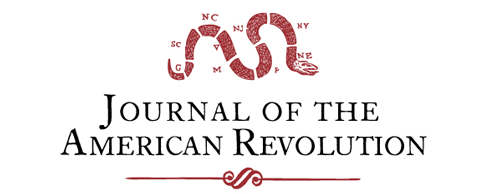



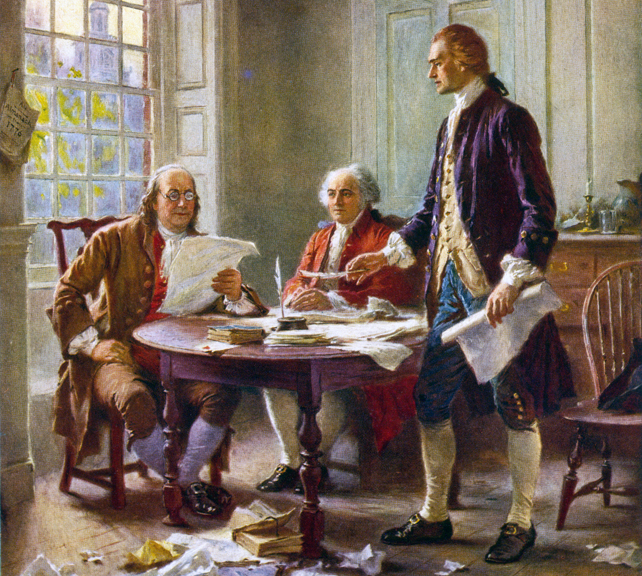
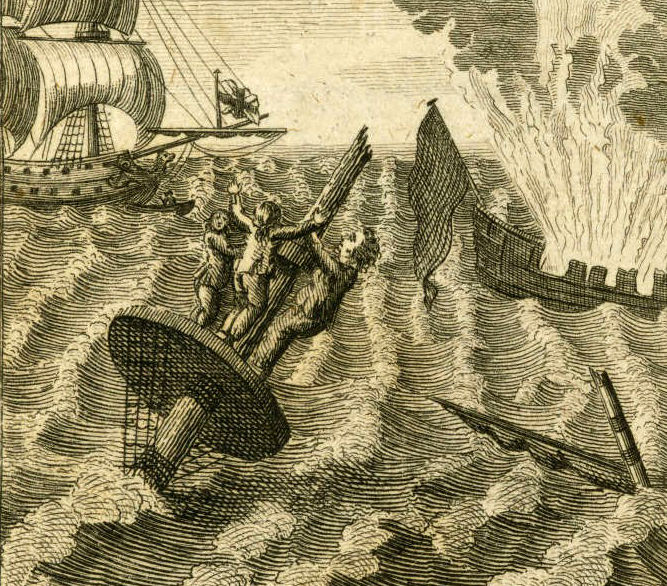
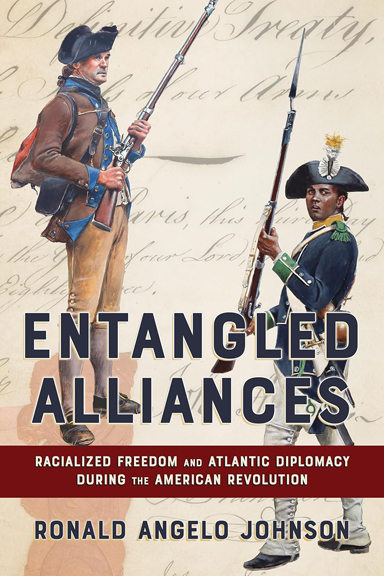

One thought on “Private Adam Rider: General Washington’s Improbable Spy”
Excellent article, and we need more articles like this one that not only elaborate on Virginia’s enlistments of soldiers that worked their way up the coast heading to northern destinations, but also tying the connections directly to General George Washington. An interesting read, here, with a rich narrative that is definitely worth saving for future reference.